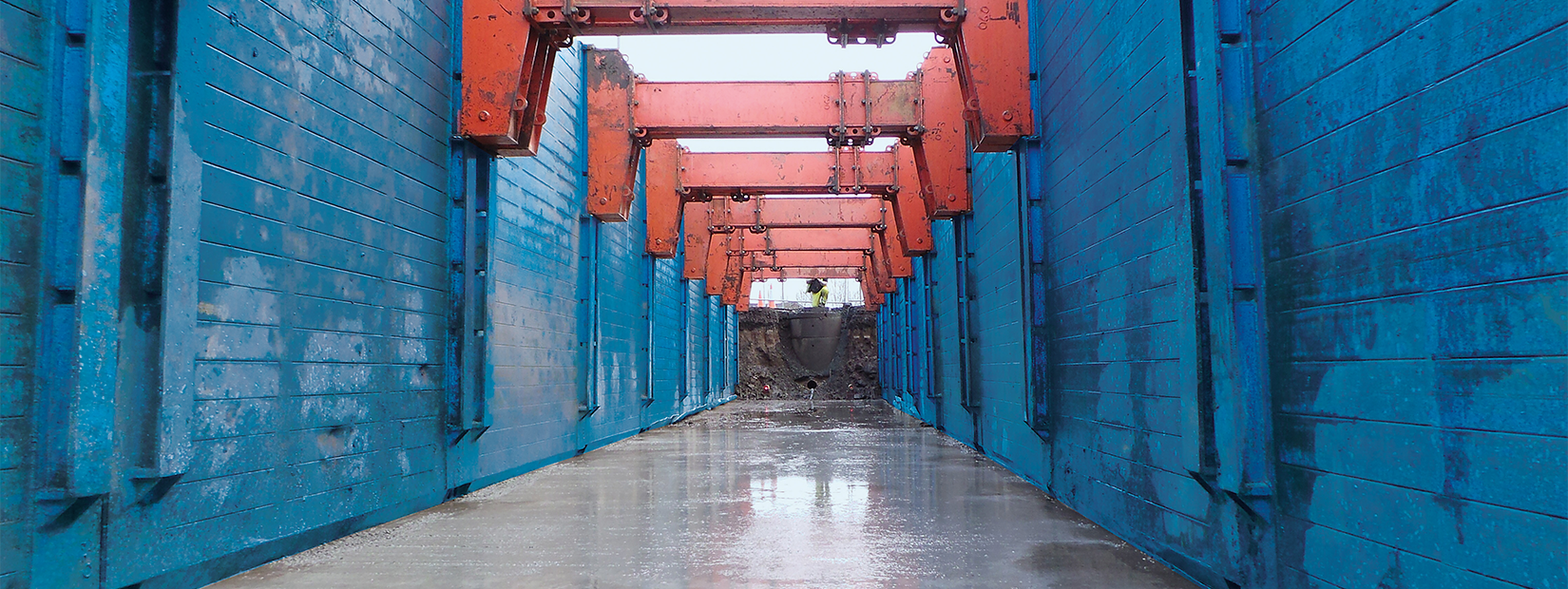Shoring is a common practice in the construction sector, being used to help with all manner of projects – most commonly groundworks. Through the use of a properly designed and installed shoring system, construction contractors can ensure they are properly supporting their work, maintaining the safety of onsite workers, as well as the integrity of the structure they’re creating. But what exactly is shoring and what options are available to contractors?
What is shoring in construction?
Shoring is the process where a building, structure or trench is supported with shores, or temporary buttresses, during repairs or other excavation works – like during the excavation phase of groundworks.
The term shoring itself comes from the word shore, meaning a timber or metal prop, and it is usually a temporary solution, with a variety of methods of shoring which can be used – dependant on the situation.
The different types of shoring methods in construction
There are several different types of shoring that are employed by construction contractors, each bringing its own benefits to a project.
- H and I-beam shoring
- Secant pile shoring
- Contiguous pile shoring
- Raking shoring
- Hydraulic shoring
- Flying shoring
This is not a comprehensive list, with other variations of shoring existing, making it important to consult a professional temporary works specialist before hiring or purchasing any shoring equipment.
Why shoring is important?
So, why is shoring so important? Shoring has a key role to play in ensuring a structure doesn’t collapse whilst an excavation or other construction works are taking place on or around it. It is for this reason that shoring is used on unsafe or unstable structures, such as new building foundations or existing infrastructure that has cracks or other damage being repaired.
Not only does shoring allow contractors to adhere to safety regulations, but it also provides peace of mind that onsite workers are safe, and that any risks are correctly and safely mitigated.
With all of this in mind, it is imperative that when looking to use shoring solutions that experienced professionals, such as structural engineers are consulted. This ensures a thorough assessment of site conditions and the project requirements, with a trained professional able to then correctly design and specify a shoring system suitable for the needs of the site.
Shoring equipment rental
If you’re looking to hire shoring equipment for trenching or excavation projects, you can do so from ourselves. We offer a wide range of easy to use and lightweight solutions, ideal for minor construction works and utility maintenance in cities and other urban environments.
See our resource brochure for more information about our shoring range or get in touch with our experienced team for any further assistance or to enquire about hiring our equipment, here.
